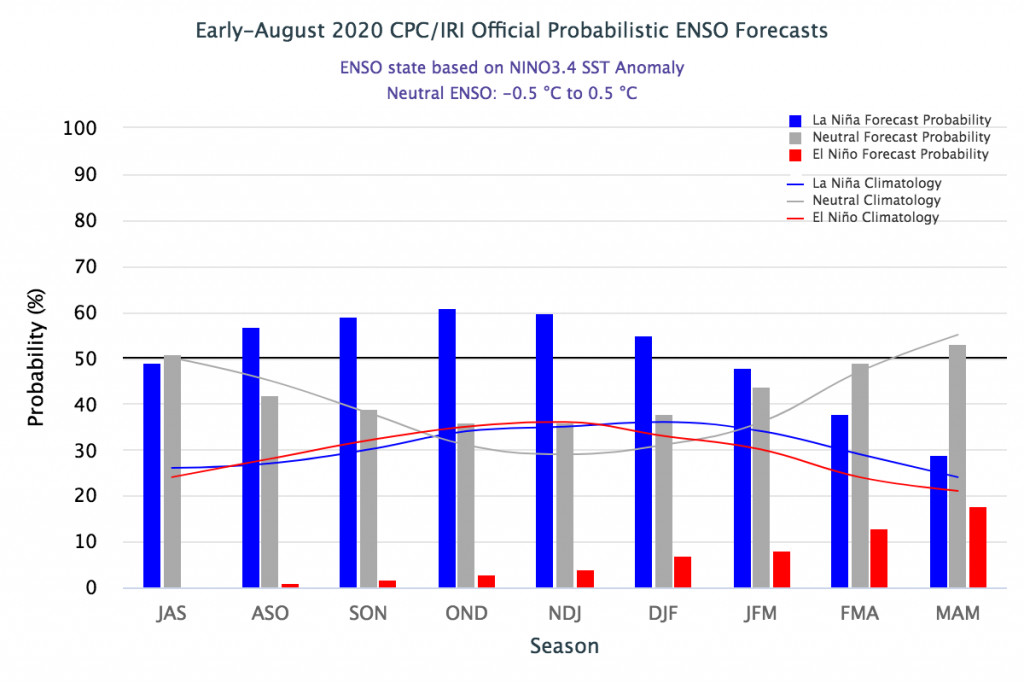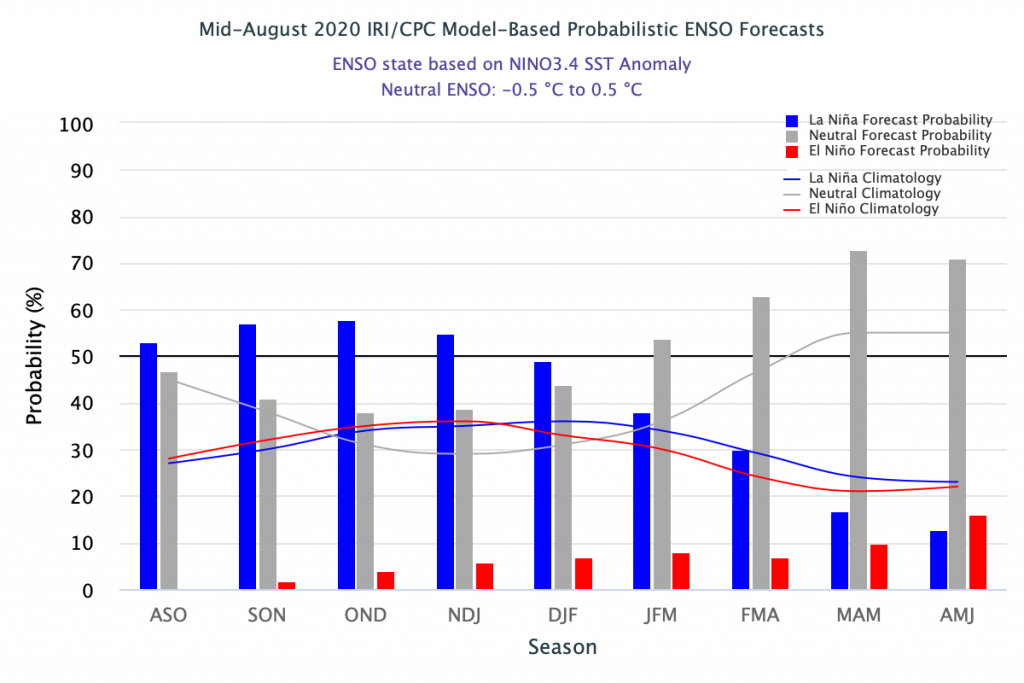August Climate Briefing: La Niña Seeming More Likely
Read our ENSO Essentials & Impacts pages for more about El Niño and La Niña.
In mid-August, the tropical Pacific sea-surface temperatures were below average, near the threshold for weak La Niña conditions. Some atmospheric indicators showed neutral conditions while others leaned toward La Niña. A new set of model runs predicts that weak La Niña conditions are most likely from early fall through early winter, with a 55-60% probability for weak La Niña for the September-November through November-January seasons. This outlook is very similar to that of the official ENSO forecast issued August 13, which used both models and human judgement, and which now carries a La Niña watch.
Weston Anderson provides the briefing summary:
What’s New
See below for tweets summarizing the current ENSO situation.
ENSO Forecasts
To predict ENSO conditions, computers model the SSTs in the Niño3.4 region over the next several months. The plume graph below shows the outputs of these models, some of which use equations based on our physical understanding of the system (called dynamical models), and some of which use statistics, based on the long record of historical observations.
The La Niña odds are lower in the official probabilistic forecast issued by the U.S. Climate Prediction Center (CPC) and IRI in early August than in the mid-month IRI/CPC forecast. The earlier forecast uses human judgement in addition to model output, while the mid-month forecast relies solely on model output. More on the difference between these forecasts in this IRI Medium post.


ENSO in context: Resource page on climate variability
IRI’s Global Seasonal Forecasts
Each month, IRI issues seasonal climate forecasts for the entire globe. These forecasts take into account the latest model outputs and indicate which areas are more likely to see above- or below-normal temperatures and precipitation.
All forecast maps, including temperature in addition to precipitation, and also including a description of the methodologies, are available on our seasonal forecast page. Additional forecast formats, such as our flexible forecast maproom, are available in the IRI Data Library.
Learn more about El Niño and La Niña on our ENSO resources page, and sign up here to get notified when the next forecast is issued. In the meantime, check out #IRIforecast.

You must be logged in to post a comment.